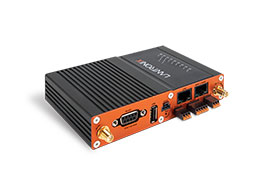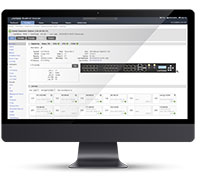Regional Energy Company

INDUSTRY: Energy
Regional energy company chooses Lantronix solution to meet strict cyber security compliance requirements
Success Highlights
- Centralized, out-of-band network management
- Standardized control over end-user access to the network
- Elevated security of entire network environment
- Out-of-the-box compliance to new regulations
- Reduced cost and complexity of network management
Case Study Overview
To meet cyber security compliance standards and provide elevated security of its entire network environment, this regional ISO chose Lantronix’s LM80 console servers and Control Center for out-of-the-box compliance. It also gained centralized, out-of-band network management and standardized control over end-user access to the network.
Challenge: Meet Strict Cyber Security Compliance Requirements
The National Energy Reliability Council (NERC) introduced Cyber Security Standards for power companies to protect critical assets of the U.S. power grid.
For network infrastructure, the NERC standards call for:
- Increased levels of remote access security to minimize the threat of cyber security attacks;
- Tracking and auditing of all actions and changes made to the IT infrastructure; and
- Secure network connections between each ISO and its customers — in this case, more than 70 companies nationwide.
“We’re responsible for keeping the lights on in the region. With the Lantronix solution, we can completely control who has access to our IT infrastructure.” – Regional ISO Network
Prior to implementing the Lantronix solution, the ISO’s system administrators were unable to ensure consistent and comprehensive network security for its network of over 70 energy and utility companies located across the United States.
The network was being accessed through both in-band and out-of-band connections, and administrators lacked a centralized and comprehensive view over who was accessing the network and what changes were being made. A solution was needed that could control user access and permissions, enforce management security standards and centralize auditing and reporting for compliance purposes.
SOLUTION: Lantronix LM80 Console Servers and Control Center
To meet NERC’s stringent network security and automation challenges, the ISO selected Lantronix LM80 Console Servers, which are managed by the Lantronix Control Center. Altogether, the solution manages more than 70 sites interconnected via the WAN at its market participants’ locations. The ISO is using the intelligence of Local Management to automate a number of network management procedures across its distributed WAN, including managing the networking equipment deployed in the various market participants’ locations to ensure network connectivity and communication to and from their customers.
By utilizing the built-in automated procedures for diagnosis, recovery and configuration management, the ISO provides better service at a lower cost to maintain and support the network. In addition, the ISO brought the Lantronix solution into its data center for LAN-based applications to replicate the automation capabilities that have been successful across the WAN environment.
“We needed to be able to securely access and control all points throughout our network to ensure the protection and reliability of the power grid. Lantronix provided that level of security with its out-of-the-box solution.” – Regional ISO Network
Product
Lantronix LM80 Console Server
Lantronix’s LM80 is a compact platform designed to act independently from the network to remotely monitor, manage and control up to eight devices, including a managed power supply.
Lantronix reduces management complexity by delivering integrated, remote management solutions to provide secure remote access and local, in-depth monitoring as well as configuration, fault and service-level management.
Lantronix Control Center
The Lantronix Control Center is deployed on a pre-configured, dual CPU, rack-mountable server and includes an embedded Oracle database engine. It is also available as a VM to run on a customer-provider server.
The Lantronix Control Center enables out-of-band management by providing a centralized point of control for all Lantronix LM Series console servers. Then, through the console servers, users have direct access and automated management of all connected devices deployed throughout the distributed IT environment. With its web-based graphical user interface (GUI), the Control Center puts IT administrators in control of real-time data to easily manage, configure, and control all connected network devices and servers.
RESULTS: Ensured Compliance While Reducing Costs
Lantronix’s solution proved to be ideal for this ISO’s distributed WAN and LAN environments as it monitors, measures and reports on all infrastructure changes made to the network, even when network connectivity is disrupted. Deploying the Lantronix solution across the ISO’s network has elevated the level of security of its environment and provided out-of-the-box compliance for the Cyber Security Standards requirements. The solution ensures that the four basic tenets of the Cyber Security Standards are met, including:
- Minimizing risk of security breaches
- Handling and reporting all incidents
- Securing the network’s perimeter
- Controlling user access
About Lantronix
Lantronix Inc. is a global provider of secure turnkey solutions for the Internet of Things (IoT) and Remote Environment Management (REM), offering Software as a Service (SaaS), connectivity services, engineering services and intelligent hardware. Lantronix enables its customers to accelerate time to market and increase operational up-time and efficiency by providing reliable, secure and connected Intelligent Edge IoT and Remote Management Gateway solutions.











